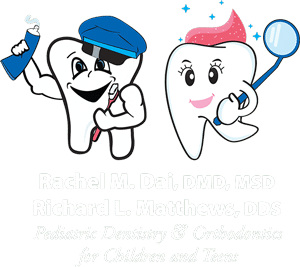3 Easy Facts About Legacy Orthodontics Shown
An orthodontist is a dental professional trained to identify, protect against, and treat teeth and jaw abnormalities. They fix existing conditions and are educated to recognize troubles that might establish in the future. Orthodontists deal with individuals of any ages, from youngsters to adults. People frequently associate an excellent smile with great health.
Malocclusion, or misaligned teeth, can result in oral issues, consisting of dental cavity, gum tissue disease, and challenging or unpleasant eating. Not every person is born with straight teeth. If you have a poor bite or large spaces between your teeth, you might wish to speak with a dental practitioner focusing on orthodontic treatment.
3 Simple Techniques For Legacy Orthodontics
( Photo Credit Score: DigitalVision/Getty Images) Orthodontists make use of repaired and removable dental devices, like braces, retainers, and bands, to change the setting of teeth in your mouth. Orthodontic treatment is for dental problems, including: Uneven teethBite issues, like an overbite or an underbiteCrowded teeth or teeth that are as well far apartJaw misalignmentThe goal of orthodontic treatment is to improve your bite.
A healthy bite ensures you can consume, eat, and talk effectively. While you might think of orthodontists as mostly for kids or young adults who need braces, they can correct dental issues at any type of age. Orthodontists attend college, dental institution, and orthodontic institution. After graduation, they spend 2 or 3 years in an orthodontic residency program.
, however not all dentists are orthodontists. They focus on two locations: Just how to effectively and safely move teeth How to effectively assist advancement in the teeth, jaw, and faceOnce an orthodontist has actually completed training, they have the option to come to be board licensed.
The Ultimate Guide To Legacy Orthodontics
Malocclusion leads to tooth overcrowding, a twisted jaw, or uneven bite patterns. Malocclusion is usually treated with: Your orthodontist affixes metal, ceramic, or plastic square bonds to your teeth.
If you have just small malocclusion, you may be able to make use of clear braces, called aligners, instead of standard dental braces (https://anotepad.com/note/read/j8pq9h7j). Some people require a headwear to help move teeth into line with pressure from outside the mouth. After dental braces or aligners, you'll need to use a retainer. A retainer is a custom tool that maintains your teeth in position.
They're most often utilized on kids. They can create extra area in the mouth without having to pull teeth. If you have a serious underbite or overbite, you might require orthognathic surgical treatment (also called orthodontic surgery) to extend or shorten your jaw. Orthodontists utilize cables, surgical screws, or plates to support your jaw bone.
You might require to see an orthodontist if you have: Crowding or otherwise sufficient space for all of your teethOverbite, when your top teeth come over your bottom teethUnderbite, when your bottom teeth are also far forwardSpacing or problems with gapsCrossbite, which is when your upper teeth fit behind your bottom teeth when your mouth is closedOpen bite or an upright void in between your front base and top teethMisplaced midline, when the center of your base and upper teeth do not align Dealing with a dental malocclusion can: Make biting, chewing, and speaking easierImprove the symmetry of our face and your general appearanceEase discomfort from temporomandibular joint disordersSeparate your teeth and make them easier to clean up, assisting protect against dental cavity or cavities It's frequently a dentist who initially notifications misaligned teeth throughout a routine examination.
Legacy Orthodontics Things To Know Before You Get This

During your initial orthodontic assessment, you'll likely have: An oral examPhotos taken of your face and smileDental X-raysPanoramic (360 degree) X-rays of your face and headImpressions to produce molds of your view website teethThese tests will certainly assist your orthodontist recognize just how to continue with your therapy. clear braces. An orthodontist is a dentist who's had training to treat your teeth and jaw
Orthodontists might execute surgical treatment, exams,X-rays,and more to help you achieve a much more comfy, much healthier smile. An orthodontist is concentrated on your bite, so something like a damaged tooth would certainly be handled by a dental professional. Orthodontists are dental professionals but not all dentists are orthodontists. Orthodontists are concentrated on your bite, or the way your teeth fit with each other, and the straightness of your teeth.
Ever asked yourself how celebrities constantly appear to have flawlessly lined up teeth? The response commonly depends on the proficient hands of an orthodontist. But exactly what does an orthodontist do? Orthodontists are oral experts who concentrate on fixing irregularities in the teeth and jaws. Their competence goes beyond simply creating a gorgeous smile; it extends to enhancing your general dental health and wellness and feature.
What Does Legacy Orthodontics Do?

, orthodontists have a diverse toolkit at their disposal. These tried-and-true braces utilize a system of brackets bonded to the teeth and connected by cords.
These removable trays are custom-made to progressively shift the teeth's setting. In cases of slim jaws, palatal expanders can be used to develop space for correct tooth placement.
Comments on “8 Easy Facts About Legacy Orthodontics Explained”